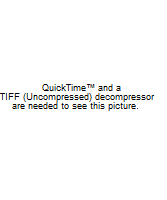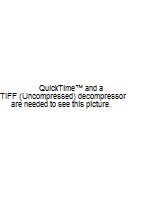 |




Mirror Images
A lesson plan created by
Marie Wilson
2006 NEH Summer Institute: From Christiana to Harper’s Ferry
held at
Dickinson College
Carlisle, Pennsylvania
July 2006
Overview
This lesson assumes that students are very familiar with the life of Harriet Tubman; the slave states of Maryland and Delaware, and the points of freedom for runaway slaves, Pennsylvania, New Jersey, New York, Massachusetts and Canada; and recognize Quakers, such as Thomas Garret, to be instrumental in the Underground Railroad Coalition. Harriet Tubman, was born in Maryland and lived as a slave there until she escaped to freedom in her early twenties. As history has noted, she returned to Maryland many times and aided in the escape of a countless number of slaves. As a conductor, she has been credited with bringing more than three hundred slaves to free states and to Canada. Thomas Garret, a landowning Quaker who lived in Delaware County, Pennsylvania, befriended Tubman and worked with her as a stationmaster on the Underground Railroad.
This lesson further assumes that unless attention is given to less familiar characters and groups in the Underground Railroad Coalition and the events happening in the Union during this period, students will have a stilted and very limited knowledge of slavery in the United States and the circumstances and events that influenced its growth and also those that began to weaken it. As an example, the Northwest Ordinance of 1787 most certainly affected slavery. (See Article 6: http://usinfo.state.gov/usa/infousa/facts/democrac/5.htm.)
In 1787, Kentucky was a district of Virginia. Following the American Revolution, this district became known as Kentucky County. In due course, the citizens of Kentucky County petitioned for a separation from Virginia. After several constitution conventions on this petition, Kentucky became the fifteenth state to be admitted to the Union. However, it held on to its Virginia heritage as a slave-holding state and became divided over the issue of slavery.
As was Maryland, Kentucky was a border state. Unlike Maryland, the only separation from freedom for the slaves was the Ohio River. Slaves could stand on the Kentucky side of this river and see the free state of Ohio. It bears mentioning that Ohio entered the Union as a free state under the articles of the Northwest Ordinance.
This lesson brings attention to Arnold Gragston, a Kentucky slave, who can be called a “Moses” for three hundred or more slaves fleeing Kentucky or through the state. Due to his role as a “conductor” and taking fleeing slaves to Ohio, it can be assumed that he had some connection to John Rankin who lived in Ohio. Rankin was a Presbyterian minister who devoted much of his life to the antislavery movement and served as a stationmaster on the Underground Railroad.
Like Harriet Tubman, Arnold Gragston was a “conductor” on the Underground Railroad. Unlike Tubman, Gragston transported his passengers by boat. Transporting passengers this way was very risky because there was nowhere to hide. He and his passengers were always in the open and easy targets if caught. However, he made many roundtrips across the Ohio River to Ohio and back to Kentucky. More than likely, his passengers continued their trip with the help of John Rankin.
The Underground Railroad in Ohio was an amazingly efficient and well-organized operation, despite the impossibility of open communication and coordination…In all, nearly three thousand miles of routes criss-crossed the state, most bound in a northeasterly direction, and at least 23 points of entry were established along the Ohio River1. The Underground Railroad in Ohio reached its greatest level of activity in the 1840s, and more stations existed in Ohio than in any other state.
http://www.dnr.state.oh.us/parks/explore/magazine/sprsum96/UNDERGRR.htm
Curriculum Standards
This unit of study addresses the Pennsylvania and United States History for Grades 7 – 9
For a list of these standards see: http://www.pde.state.pa.us/stateboard_ed/lib/stateboard_ed/E.HISTORY-web03.pdf
Time required
Time is flexible: 4 to 6 45-minute periods. How in depth the teacher wants the students to research will determine the time required. These activities might be used as an introduction to aspects of the Underground Railroad.
Materials
ü Access to the Internet for teachers
ü Access to the Internet for students
ü Transparency Sheets
ü Chart Paper
ü Markers
ü Handouts: Fugitive Slave Act of 1850 (background information)
Northwest Ordinance Act of 1787 (background information)
Arnold Gragston’s Interview
Website list for student research (include primary documents and graphics)
Objectives
- Thematic integration of reading/English and computer technology with history/social studies
- Students will enhance their history/social studies literacy.
- Students will analyze and interpret primary sources.
- Students will become aware of the lives and the historical significance of known and unknown Underground Railroad participants.
- Students will synthesize information gained from research.
Unit
It is suggested that students work in cooperative groups for all activities.
- Head chart paper with: “What I Know About…” (Harriet Tubman, Fugitive Slave Act, Northwest Ordinance, Pennsylvania and the Underground Railroad, Kentucky and the Underground Railroad or Northwest Ordinance, etc. This will depend on the teacher’s decided focus or foci.) Depending on the number of charts, form students into that many groups to brainstorm and fill-in information in response to the prompt on the group’s assigned chart. After all charts are completed, allow students to do a “Gallery Walk” to read each chart and if they desire, to add information to the charts. A reporter from each group will read their completed chart to the whole class. Follow-up this activity with students making journal entries following a pre-designed format for making journal entries. In this instance, the prompt might be: “What I would like to know/learn about….”
- Computer research: Each group will research the topic on its chart. As a group the members will determine the sub-topic for individual members to research unless the teacher provides the sub-topics. Websites have been listed above; however, the teacher should provide a more extensive list. Remind students to make notes from their research in their history notebook. A follow-up activity might be to for each group to add a “What I learned from my research….” chart to the original.
- Text Rendering: Students will read silently the handout of the Arnold Gragston’s interview. As they read, they will underline one word that stood out for them, circle a phrase that they though important and box a sentence that they thought important. After an appropriate amount of time, stop the reading and do a “Whip Around”. Students will say their underlined word. After everyone has said his/her word, students will read their circled phrase. Lastly, students will read their sentence. Follow-up with “Table-Top” discussions then discuss in the larger group. The prompts should pertain to the interview itself. Student’s journal entry prompt might pertain to the accuracy of Mr. Gragston’s memory.
- Working in pairs, “Think-Pair-Share” students will create a Venn Diagram comparing the lives of Harriet Tubman and Arnold Gragston. If students will like to select another slave or former slave to compare with Arnold Gragston, allow them to do so. Each pair is given a transparency film
- Computer activity from “Leaders of the Underground Railroad.” http://www.freedomcenter.org/freedomquests/cardgame/
Have students go to this site and develop a card game while exploring the people who participated in the Underground Railroad: Freedom Seekers, Conductors, abolitionists and Allies. Follow-up with students creating a journal entry about the life of one of the people that they explored.
- Return to and review charts “What I Know…” and “What I Learned…” Encourage students to add to the charts. Individually students will write an essay of no less than eight paragraphs in regards to any chart, handout or web research pertaining to the Underground Railroad Coalition.
Assessment
Journal entries following the prescribed format
History Notebook Records
Portrait of Harriet Tubman
Credit: "Portrait of Harriet Tubman." Courtesy of the Moorland-Spingarn Research Center, Howard University.
Portrait of John Rankin and Information on Rankin House
http://www.ohiohistory.org/places/rankin/
Portrait of Thomas Garret
Credit: From Wikipedia, the free encyclopedia
FEDERAL WRITERS PROJECT
Interview with Arnold Gragston
http://www.rootsweb.com/~kypendle/arnoldgragston.htm
Background Information on Harriet Tubman
http://www.americaslibrary.gov/cgi-bin/page.cgi/aa/tubman
The Underground Railroad and York County Pennsylvania
http://www.millersville.edu/~ugrr/yorkugrr/york_ugrr.htm
Pennsylvania Underground Railroad Resources
http://www.phmc.state.pa.us/ppet/underground/page1.asp?secid=31
The Fugitive Slave Act, September 18, 1850
http://www.fordham.edu/halsall/mod/1850fugitive.html